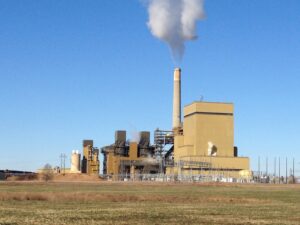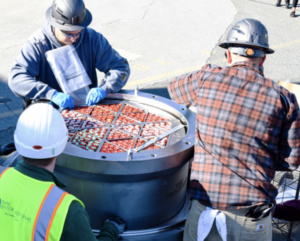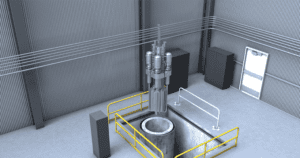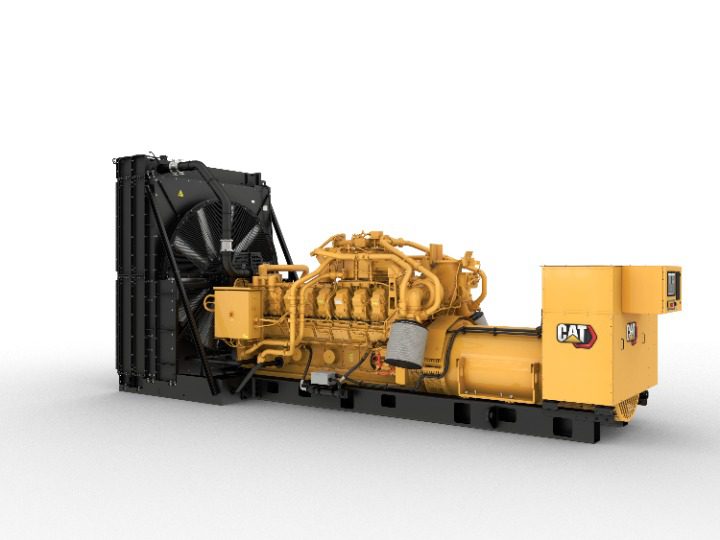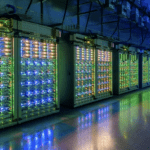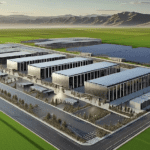Backup generators are gaining a new lease on life in data centers. For decades, they have been a rarely used part of the infrastructure, existing for those moments when other power sources fail. But their profile is shifting due to the chronic shortage of available power across North America.
Data center developers have grown impatient with long lead times from utilities, gas turbine original equipment manufacturers (OEMs), and new nuclear generation suppliers. Due to the demand for high reliability and always-on power for artificial intelligence (AI) workloads, some are turning to natural gas generators to provide power more rapidly.
Take the case of the massive data center campus being developed in Millard County, Utah, by Joule Capital Partners, Caterpillar, and CAT dealer Wheeler Machinery that could eventually add up to 4 GW of power. At its heart will sit a fleet of Caterpillar G3520K generator sets (Figure 1) and more than 1 GWh of battery storage. These engines will run on natural gas and be used for prime power. Each one has an engine speed of 1,500 RPM and a power output of 2.5 MW. The system produces electricity and captures waste heat to power and cool high-density AI servers.
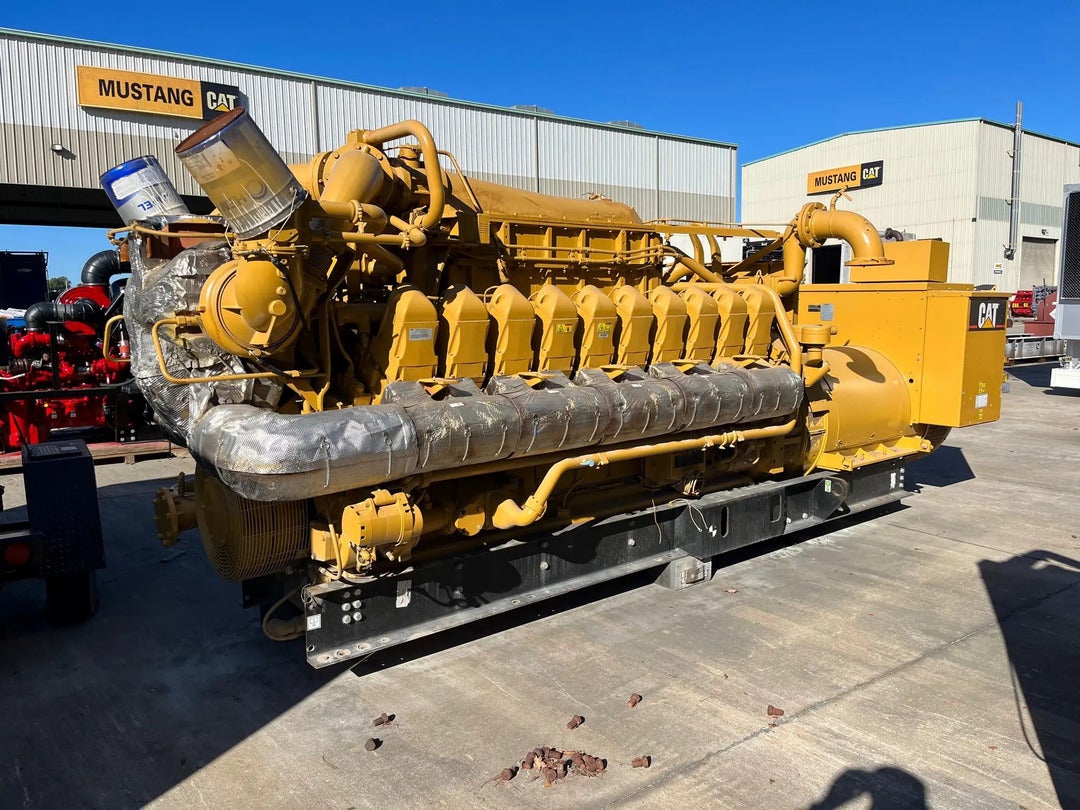
“The full generation package can be delivered ahead of most other generation technologies,” said Melissa Busen, senior vice president of Electric Power at Caterpillar. “This speed-to-power advantage is critical for meeting the explosive growth in demand for compute capacity.”
Data Center Construction Boom
Massive data center complexes are becoming the norm due to the pressure to support AI. GW-scale projects are springing up all over North America. According to consulting firm DC Byte, colocation providers and hyperscalers added 12 GW of new capacity in 2024. Thirty-five GW-scale projects were announced in 2024 compared to three the previous year. Another 15 projects broke ground that were slightly below 1 GW in size.
This new breed of AI factories is being situated in places like North Dakota, West Texas, Indiana, Pennsylvania, Kentucky, Kansas City metro, West Virginia, North Carolina, and Alberta, Canada. In North Dakota, for example, Applied Digital found an underutilized wind farm, while in Wonder Valley, Alberta, onsite natural gas generation will power an 8-GW data center with the first 1.5 GW scheduled for completion by 2027. Bring your own power (BYOP) is becoming a necessity for developers—especially when they want to open an AI factory.
Gas Engine Upsurge
The gas engine sector has been healthy for many years. Analyst firm Global Market Insights (GMI) placed the value of the global gas generator market at $6.9 billion in 2024. The projected growth rate is 8.8% per year, reaching $16 billion by 2034. Gas generators beyond 330 kVA are the fastest growing segment. They will exceed $3.5 billion by 2034, at which time machines greater than 750 kVA will account for about a quarter of the total, due to surging data center and AI demand.
The demand for generators has created growth not only for the factories that build the gensets, but also for the companies that package the open-engine generator. Fidelity Manufacturing of Ocala, Florida, for example, is facing an unprecedented era of expansion. The company manufactures custom steel fuel tank sub-bases, and aluminum tube frame enclosures (Figure 2), as well as stairs, platforms, and walkways to supply complete generator packages for engines from Caterpillar, Cummins, Rehlko (formerly Kohler), mtu, Generac, Blue Star, and others.
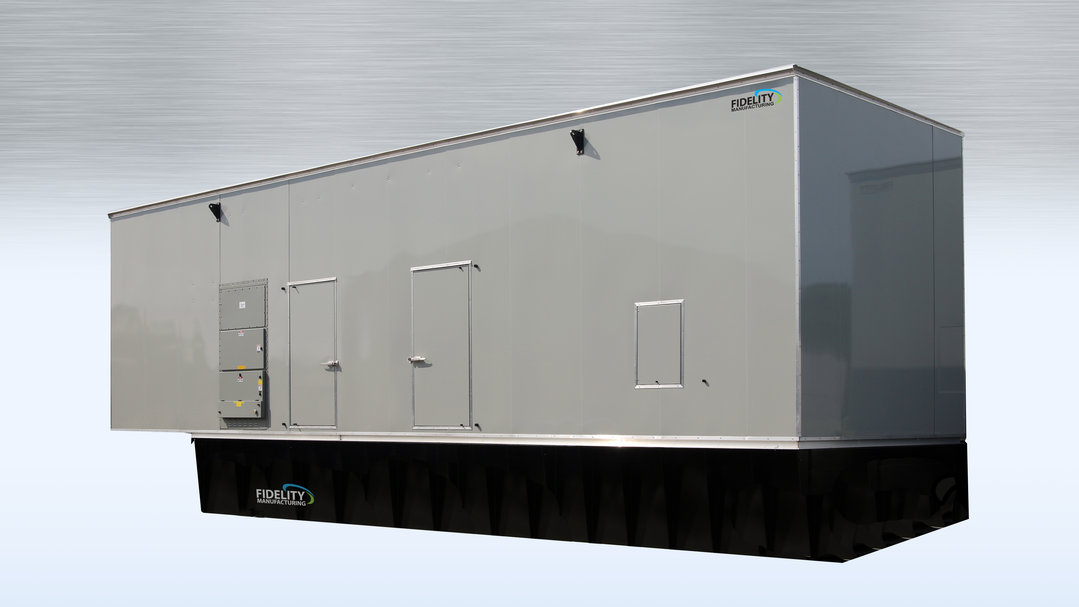
“We have grown from 40 people to more than 500 in less than a decade, with data center demand for generators being a significant part of that growth,” said Mitch Twardosky, Fidelity’s CEO.
The company has opened a second 86,000-square-foot factory near its original 76,000-square-foot facility to increase capacity. It also has a five-acre asphalt storage area. Another three and a half acres of storage space is under construction, along with a 25,000-square-foot production building and a 25,000-square-foot warehouse.
Advice for Those Specifying Gas Engines
Lead times can be up to one year, or more, to deliver a larger package for a data center. Modern gas engines are available up to about 2.5 MW.
“Data center managers should pay attention to the acoustical performance, reliability, and longevity of any gas generator package they are considering,” said Twardosky.
He recommended choosing an aluminum tube frame with aluminum sheeting over the traditional steel structure due to their strength and rigidity as well as corrosion resistance. Additionally, aluminum designs are much lighter, which aids in transport logistics and ease of installation onsite.
Design is driven by the American Society of Civil Engineers (ASCE) Structural Engineering Institute (SEI) requirements or state/local building codes, depending on the location. These take into account hurricane, earthquake, and weather protection, as well as electrical safety and other essential code points.
Generator packages can include features such as a radiator-mounted load banks, generator output circuit breakers, a neutral ground resistor, LED lighting, plenty of internal and external outlets, as well as power distribution panels, transformers, battery chargers, ventilation fans, emergency stop stations, and space heaters. Most generator manufacturers, added Twardosky, produce the engine/generator and have someone else package it and install it onsite. Fidelity has a service division that installs the packages onsite, both for its own enclosure packages, as well as packages from other vendors. The company is a licensed electrical contractor and a licensed certified building contractor, providing the skills needed for the complex installations.
Stairs, platforms, and walkways are needed for access to an enclosure package. They should never be an afterthought. They should be built in compliance with Occupational Safety and Health Administration (OSHA) and International Building Code (IBC) standards, composed of an aluminum tube frame decked with molded fiberglass grating in high-visibility yellow.
“Data center managers should look for strong, anti-slip surfaces with chemical resistance to fuels and petroleum products,” Twardosky advised.
Generators for Prime Power
Diesel generators have been the norm for backup in data centers for decades. Diesel is gradually giving way to natural gas as the preferred fuel, and this opens the door to generators transitioning from backup duties to the provision of prime power.
Some utilities are telling data center developers it will be anywhere from three to seven years before they can get more power. Natural gas generators may provide a more immediate solution. They can be installed and used to supply power to operate the entire data center initially and transitioned to backup duty if other sources of power become available.
—Drew Robb (drewrobb@sbcglobal.net) has been a full-time freelance writer for more than 25 years specializing in engineering and technology.


